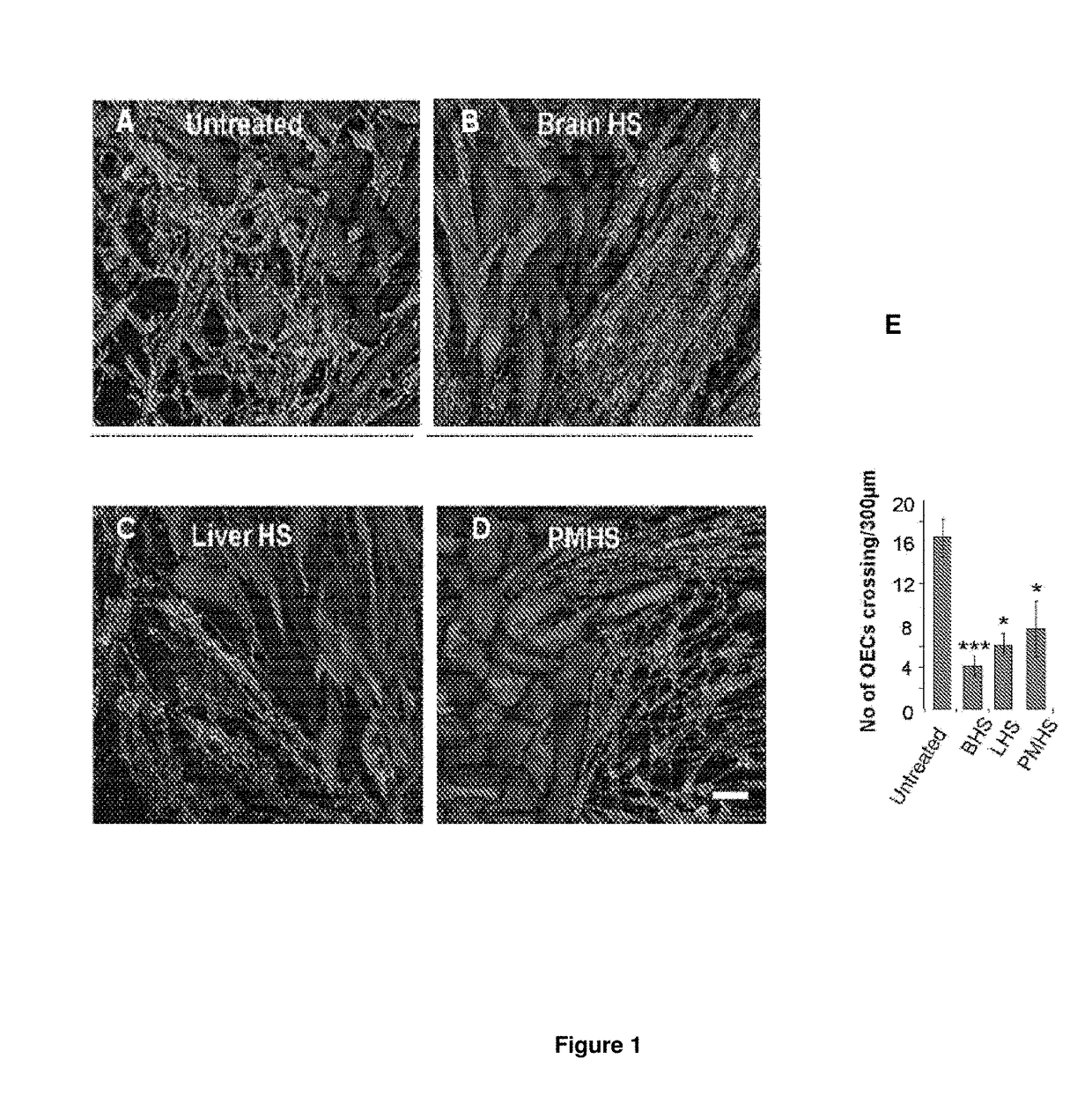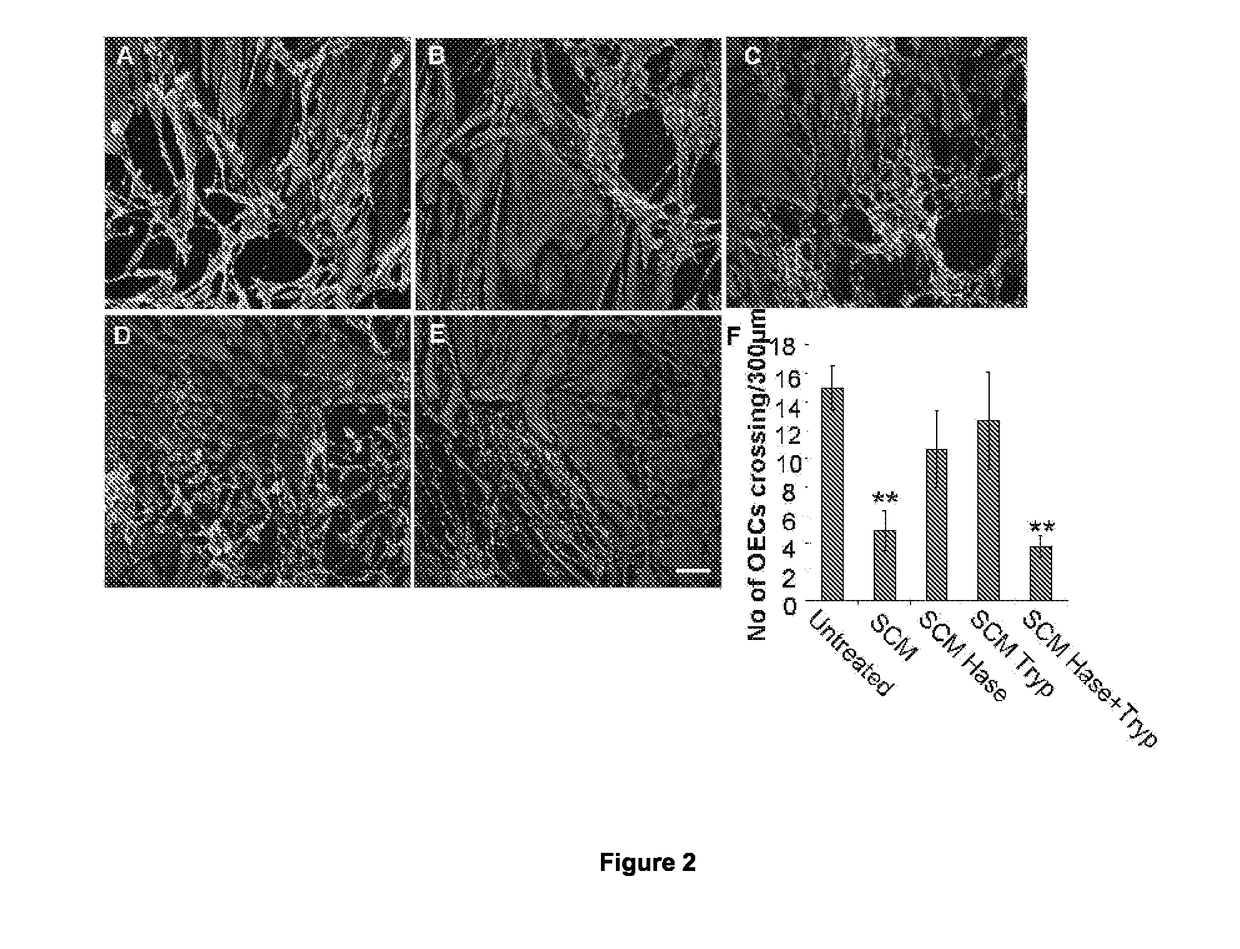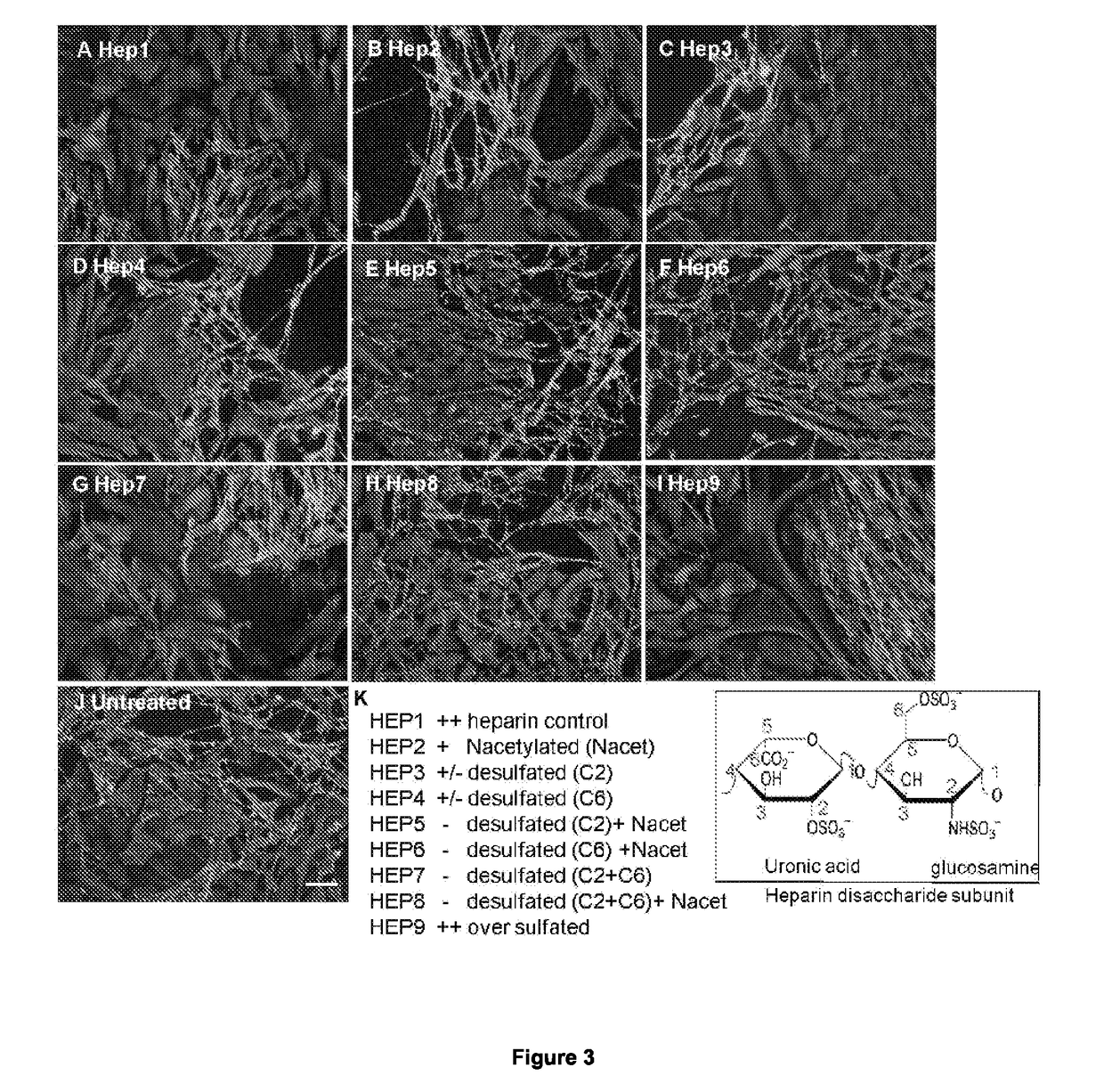Agents for the prevention and/or treatment of central nervous system damage
a technology for central nervous system damage and agents, which is applied in the direction of immunoglobulins, peptides, drugs against animals/humans, etc., can solve the problems of cns damage, largely permanent and irreversible, and the inability of regenerating axons to cross the scar boundary formed in the host, so as to promote cns repair and prevent cns damage
- Summary
- Abstract
- Description
- Claims
- Application Information
AI Technical Summary
Benefits of technology
Problems solved by technology
Method used
Image
Examples
example 1
Preparation of Modified Heparin Derivatives
[0267]Chemically modified heparin compounds (A) to (I) were prepared by the following combinations of reactions (a) to (g) set out below:
[0268]HEP1 PIMH starting material (Celsus Labs, Cincinnati, Ohio);
[0269]HEP2 N-acetyl heparin (d) (f);
[0270]HEP3 Ido 2-de-O-sulphated heparin (a);
[0271]HEP4 6-O-desulphated heparin (b) (e);
[0272]HEP5 Ido 2-de-O-sulphated, N-acetylated heparin (a) (d) (f);
[0273]HEP6 6-O-desulphated, N-acetylated heparin (b) (f);
[0274]HEP7 6-O-desulphated, 2-O-desulphated heparin (c) (e);
[0275]HEP8 6-O-desulphated, 2-O-desulphated, N-acetylated heparin (c) (f); and
[0276]HEP9 Per-sulphated heparin (g) (e).
[0277]Compounds were characterized by 1H and 13C NMR as previously described. (Yates et al., Carbohydrate Research 1996, 294, 15-27.) Compounds were desalted, lyophilized and re-suspended in the appropriate buffer prior to assay.
Chemical Reactions
[0278](a) Selective removal of iduronate 2-O-sulphate was achieved as described...
example 2
The Anticoagulant Activity of the Heparin Derivatives Prepared in Example 1
Experimental Protocol:
[0292]The anti-factor Xa activity was measured against a PIMH standard of known activity using a diagnostic grade Coatest Heparin test kit (Chromogenix, MA), adapted to a 96-well plate format, reading A405.
Results:
[0293]The Table below shows the anticoagulant activity (anti-Xa activity) of the heparin derivatives described in Example 1 herein. Seven of the heparin-derivatives (HEP 2 to H) 50 including the six O-de-sulphated heparins of the present invention (HEP to HEP8) show <1.5% anti-Xa activity compared with that of the standard heparin (HEP1).
Anticoagulant Activity Data16
[0294]
Anti-coagulantCompoundR1R2R3activityHEP1PMIHSO3SO3SO3 100%HEP2N-acetylSO3SO3COCH30.03%HEP3UA-2-OHHSO3SO3 0.4%HEP4GlcN-6-OHSO3HSO3 0.5%HEP5UA-2-OH, N-AcetylHSO3COCH30.03%HEP6GlcN-6-OH, N-acetylSO3HCOCH30.03%HEP7UA-2-OH, GlcN-6-OHHHSO30.03%HEP8UA-2-OH, GlcN-6-OH, HHCOCH30.03%N-acetylHEP9Per-sulphatedSO3SO3SO335....
example 3
Assessments of Anti-Coagulant Activity of the Heparin Derivatives
[0295]Factor Xa and Factor II activity was measured using a colorimetric substrate assay as previously described17. Briefly, in a 96 well ELISA plate, antithrombin III (American Diagnostica, 30 mIU / ml final concentration) was incubated with heparin or polysaccharide fractions in 0.9% NaCl at 37° C. for 2 minutes. Factor IIa (Sigma, 15 mU / ml final concentration) or Factor Xa (Thermo Scientific, 15 mU / ml final concentration) was added and the samples incubated for a further 1 minute at 37° C. Factor Xa Chromogenic substrate (Sigma, 240 uM final concentration) was added to the samples and incubated for 10 minutes at 37° C. The reaction was stopped with glacial acetic acid (Sigma, 25% final concentration). Colour change of the substrate was measured at 405 nm.
[0296]APTT and PT assays were performed using a Axis Shield Thrombotrack 1 instrument using normal human plasma, Pathrombin SL reagent and Thromborel S (all from Axis...
PUM
| Property | Measurement | Unit |
|---|---|---|
| average molecular weight | aaaaa | aaaaa |
| average molecular weight | aaaaa | aaaaa |
| average molecular weight | aaaaa | aaaaa |
Abstract
Description
Claims
Application Information
 Login to View More
Login to View More - R&D
- Intellectual Property
- Life Sciences
- Materials
- Tech Scout
- Unparalleled Data Quality
- Higher Quality Content
- 60% Fewer Hallucinations
Browse by: Latest US Patents, China's latest patents, Technical Efficacy Thesaurus, Application Domain, Technology Topic, Popular Technical Reports.
© 2025 PatSnap. All rights reserved.Legal|Privacy policy|Modern Slavery Act Transparency Statement|Sitemap|About US| Contact US: help@patsnap.com



